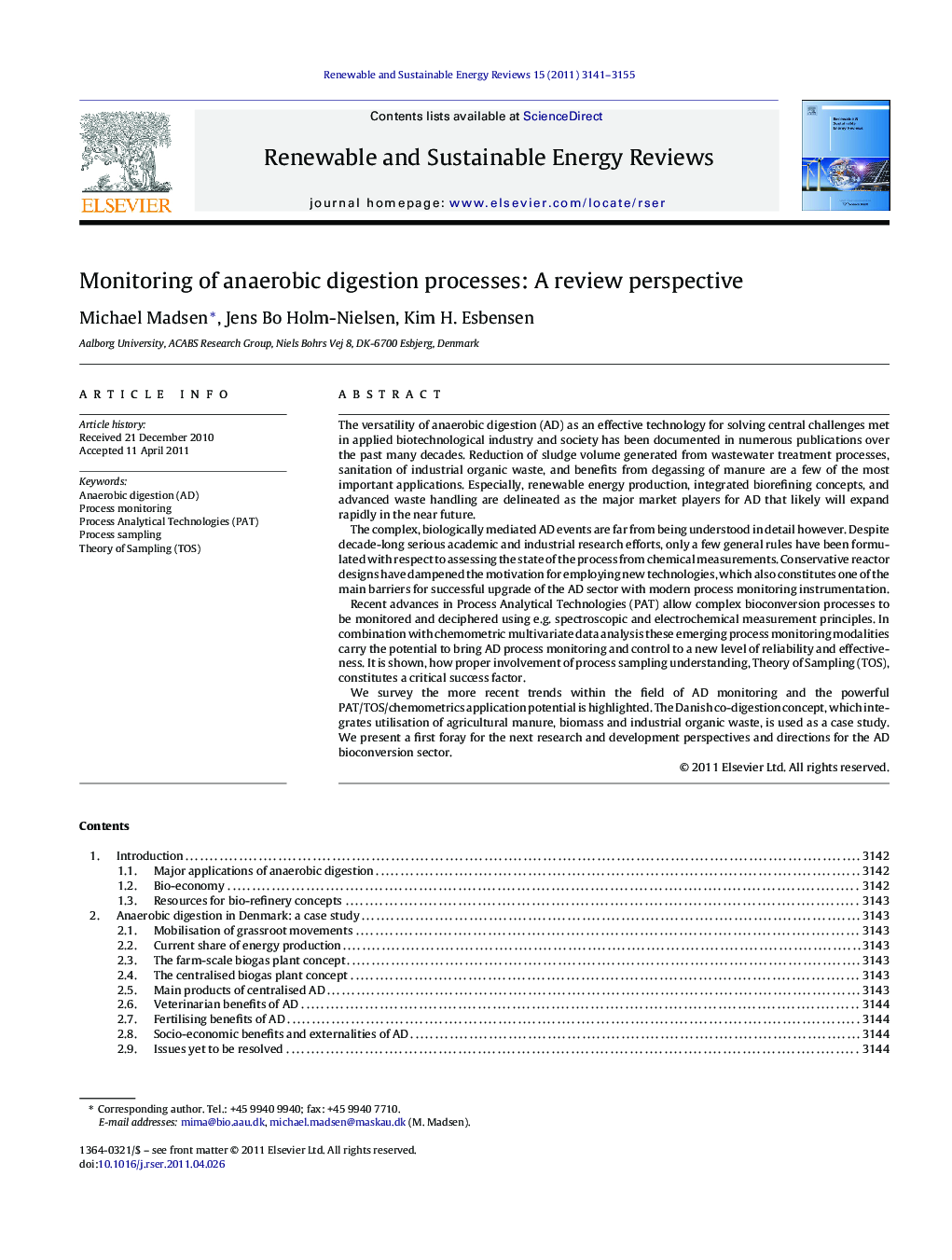| کد مقاله | کد نشریه | سال انتشار | مقاله انگلیسی | نسخه تمام متن |
|---|---|---|---|---|
| 1751170 | 1018409 | 2011 | 15 صفحه PDF | دانلود رایگان |

The versatility of anaerobic digestion (AD) as an effective technology for solving central challenges met in applied biotechnological industry and society has been documented in numerous publications over the past many decades. Reduction of sludge volume generated from wastewater treatment processes, sanitation of industrial organic waste, and benefits from degassing of manure are a few of the most important applications. Especially, renewable energy production, integrated biorefining concepts, and advanced waste handling are delineated as the major market players for AD that likely will expand rapidly in the near future.The complex, biologically mediated AD events are far from being understood in detail however. Despite decade-long serious academic and industrial research efforts, only a few general rules have been formulated with respect to assessing the state of the process from chemical measurements. Conservative reactor designs have dampened the motivation for employing new technologies, which also constitutes one of the main barriers for successful upgrade of the AD sector with modern process monitoring instrumentation.Recent advances in Process Analytical Technologies (PAT) allow complex bioconversion processes to be monitored and deciphered using e.g. spectroscopic and electrochemical measurement principles. In combination with chemometric multivariate data analysis these emerging process monitoring modalities carry the potential to bring AD process monitoring and control to a new level of reliability and effectiveness. It is shown, how proper involvement of process sampling understanding, Theory of Sampling (TOS), constitutes a critical success factor.We survey the more recent trends within the field of AD monitoring and the powerful PAT/TOS/chemometrics application potential is highlighted. The Danish co-digestion concept, which integrates utilisation of agricultural manure, biomass and industrial organic waste, is used as a case study. We present a first foray for the next research and development perspectives and directions for the AD bioconversion sector.
Journal: Renewable and Sustainable Energy Reviews - Volume 15, Issue 6, August 2011, Pages 3141–3155